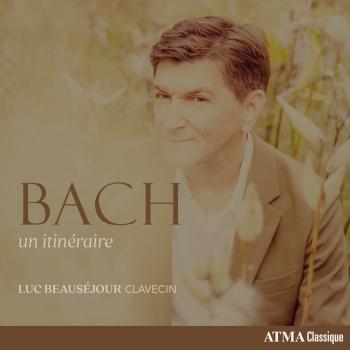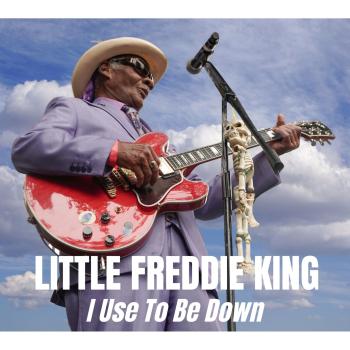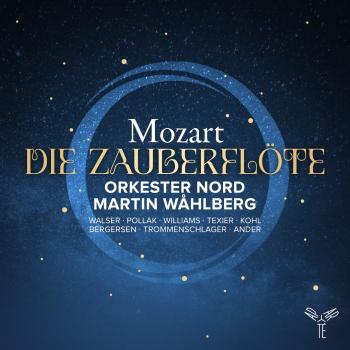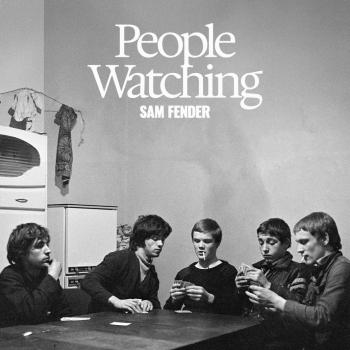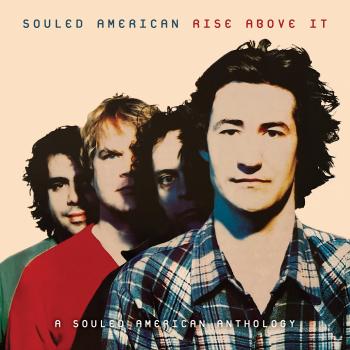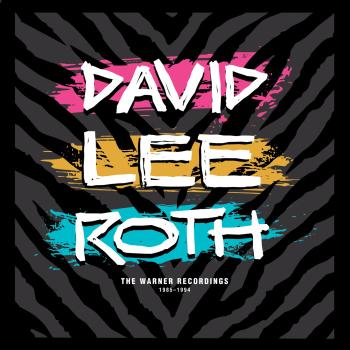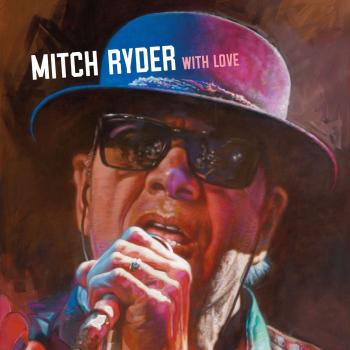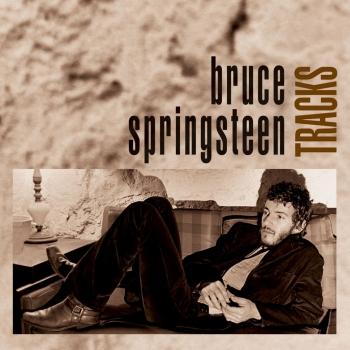
Devils & Dust Bruce Springsteen
Album info
Album-Release:
2005
HRA-Release:
25.11.2015
Label: Sony / Columbia-Fingers & Thumbs
Genre: Rock
Subgenre: Singer / Songwriter
Artist: Bruce Springsteen
Album including Album cover
I`m sorry!
Dear HIGHRESAUDIO Visitor,
due to territorial constraints and also different releases dates in each country you currently can`t purchase this album. We are updating our release dates twice a week. So, please feel free to check from time-to-time, if the album is available for your country.
We suggest, that you bookmark the album and use our Short List function.
Thank you for your understanding and patience.
Yours sincerely, HIGHRESAUDIO
- 1 Devils & Dust 04:58
- 2 All The Way Home 03:35
- 3 Reno 04:08
- 4 Long Time Comin' 04:17
- 5 Black Cowboys 04:07
- 6 Maria's Bed 05:37
- 7 Silver Palomino 03:21
- 8 Jesus Was an Only Son - The Song 02:52
- 9 Leah 03:33
- 10 The Hitter 05:48
- 11 All I'm Thinkin' About 04:17
- 12 Matamoros Banks 04:00
Info for Devils & Dust
Bruce Springsteen's nineteenth album, Devils & Dust, features twelve brand-new Springsteen songs. and was produced by Brendan O'Brien, who first worked with Springsteen on the acclaimed album, The Rising. The seeds for the new album were sown nearly a decade ago, when the singer-songwriter launched his first-ever solo acoustic tour (1995--96). Two of the new album's songs, 'The Hitter' and 'Long Time Comin',' were actually written and performed on The Ghost of Tom Joad tour. But not all the material dates back that far; the title track was written around the start of the war in Iraq, Springsteen said. 'It works as a metaphor for all the music underneath it, the individual stories of people wrestling with their demons,' he said of the title track. Springsteen opted to record without the E Street Band for Devils & Dust. The core group was Springsteen on guitar and other instruments, producer Brendan O'Brien on bass and drummer Steve Jordan. In keeping with his pattern of recording, the new album is a quieter, more acoustic affair than The Rising. Springsteen, now 55, has alternated between large-scale rock records followed by more introspective material since 1982's Nebraska was released two years after The River. Pedal steel guitar, harmonica and violin fill in the sparse, rootsy arrangements. The bonus DVD includes a special Devils & Dust film by noted photographer and film maker Danny Clinch, including rare, never-before-seen acoustic performances of 'Devils & Dust,' 'Long Time Comin',' 'Reno,' All I'm Thinkin' About' and 'Matamoras Banks' plus Bruce's personal introductions to the tracks.
„Every decade or so, Bruce Springsteen releases a somber album of narrative songs, character sketches, and folk tunes -- records that play not like rock & roll, but rather as a collection of short stories. Nebraska, released in the fall of 1982 during the rise of Reagan's America, was the first of these, with the brooding The Ghost of Tom Joad following in 1995, in the thick of the Clinton administration but before the heady boom days of the late '90s. At the midpoint of George W. Bush's administration, Springsteen released Devils & Dust, another collection of story songs that would seem on the surface to be a companion to Nebraska and Ghost, but in actuality is quite a different record than either. While the characters that roam through Devils & Dust are similarly heartbroken, desperate, and downtrodden, they're far removed from the criminals and renegades of Nebraska, and the album doesn't have the political immediacy of Ghost's latter-day Woody Guthrie-styled tales -- themes that tied together those two albums. Here, the songs and stories are loosely connected. Several are set in the West, some are despairing, some have signs of hope, a couple are even sweet and light. Springsteen's writing is similarly varied, occasionally hearkening back to the spare, dusty prose of Nebraska, but often it's densely composed, assured, and evocative, written as if the songs were meant to be read aloud, not sung. But the key to Devils & Dust, and why it's his strongest record in a long time, is that the music is as vivid and varied as the words. Unlike the meditative, monochromatic The Ghost of Tom Joad, this has different shades of color, so somber epics like 'The Hitter' or the sad, lonely 'Reno' are balanced by the lighter 'Long Time Comin',' 'Maria's Bed,' and 'All I'm Thinkin' About,' while the moodier 'Black Cowboys' and 'Devils & Dust' are enhanced by subtly cinematic productions. It results in a record that's far removed in feel from the stark, haunting Nebraska, but on a song-for-song level, it's nearly as strong, since its stories linger in the imagination as long as the ones from that 1982 masterpiece (and they stick around longer than those from Ghost, as well).“ (Stephen Thomas Erlewine, AMG)
Bruce Springsteen, vocals, guitar, keyboards, bass, drums, harmonica, tambourine, percussion
Brendan O'Brien, hurdy-gurdy, sarangi, sitar, bass guitar, tambora
Steve Jordan, drums
Marty Rifkin, steel guitar
Chuck Plotkin, piano
Danny Federici, keyboards
Nashville String Machine, strings
Soozie Tyrell, violin, backing vocals
Brice Andrus, horns
Susan Welty, horns
Thomas Witte, horns
Donald Strand, horns
Mark Pender, trumpet
Patti Scialfa, backing vocals
Lisa Lowell, backing vocals
Produced by Brendan O'Brien
Digitally remastered
Zur Info: wir bieten dieses Album in der nativen Abtastrate von 44.1 kHz, 24-Bit an. Die uns zur Verfügung gestellte 96 kHz-Version wurde hochgerechnet und bietet keinen hörbaren Mehrwert!
Bruce Springsteen
wurde am 23. September 1949 in Long Branch im Bundestaat New Jersey geboren. Seine Kindheit und Jugend verbrachte er in Freehold, New Jersey, als ältester Sohn von drei Geschwistern. Neben der katholischen Erziehung prägte vor allem die Working Class-Mentalität des Elternhauses den Heranwachsenden.
Sein Enthusiasmus für Rockmusik wurde bereits im Alter von etwa zehn Jahren durch Elvis Presley geweckt, in dieser Zeit bekam er auch seine erste Gitarre. Später zogen ihn auch die Rolling Stones und die Beatles in ihren Bann. Nach dem Wechsel auf die High School von Freehold eröffnete sich ihm die Welt der Rockmusik und damit ungeahnte neue Möglichkeiten, den ernüchternden Aussichten, die ihm das eigene Elternhaus bot, zu entfliehen. Die Begegnung mit der Musik Bob Dylans offenbarte ihm schließlich die Magie, die das Schreiben von Songtexten bietet. Mehr und mehr widmete er sich der Gitarre und spielte ab und an mit kleineren Bands. Nach dem Ende der Highschool im Jahr 1967 wechselte er für ein Jahr an das Ocean County College.
In den folgenden Jahren gründete Springsteen verschiedene Bands (u.a. Earth, Steel Mill) und lernte bei Gastauftritten und Jam-Session zahlreiche spätere E Street Band-Mitglieder kennen (u.a. Gitarrist Steven Van Zandt, Garry Tallent, David Sancious, Vini Lopez und Danny Federici). 1971 gründete er die Bruce Springsteen Band, aus der später die legendäre E Street Band hervor ging.
Sein erstes Studioalbum „Greetings from Asbury Park, N.J.“ erschien 1973 beim Label Columbia Records, bei dem Bruce Springsteen bis heute unter Vertrag steht. Die Platte wurde von Kritikern gelobt, erwies sich jedoch zunächst als kommerzieller Flop. Genau wie das Follow-Up-Album „The Wild, The Innocent & The E Street Shuffle”, das ebenfalls 1973 veröffentlicht wurde.
Der Durchbruch folgte schließlich zwei Jahre später mit „Born To Run“. Der Longplayer kletterte bis auf Platz drei der US Billboard Charts und mit dem Titelsong gelang Springsteen erstmals ein Single-Hit. „Born To Run“, das zu einem seiner legendären Trademark-Stücke wurde, peakte auf Position 23.
Der große kommerzielle Erfolg machte den Mittzwanziger in Windeseile zu einem Star und zu einem der ganz großen Hoffnungsträger des US-Rock. Der Musikkritiker Jon Landau prägte in dieser Zeit den legendären Satz: „Ich habe die Zukunft des Rock’n’Roll gesehen, und ihr Name ist Bruce Springsteen“. Er sollte Recht behalten. Kurze Zeit später wechselte Landau die Seiten und wurde Springsteen Manager. Eine Position, die er bis zum heutigen Tage inne hat.
Die Veröffentlichung des folgenden Albums „Darkness On The Edge Of Town“ verzögerte sich aufgrund eines Rechtsstreits mit dem vorigen Manager bis ins Jahr 1978. Die Euphorie von „Born To Run“ war auf dem Follow-Up einer latent pessimistischen Atomsphäre gewichen. Im gleichen Jahr gelang der Musikerin Patti Smith mit dem von Springsteen geschriebenen Song „Because The Night“ ein weltweiter Hit. 1979 nahm er an den „No Nukes“-Konzert teil, dass sich gegen die Nutzung von Atomkraft wendete. …
This album contains no booklet.

